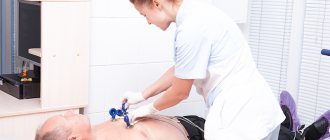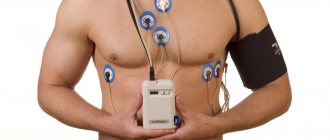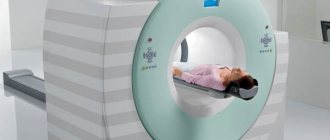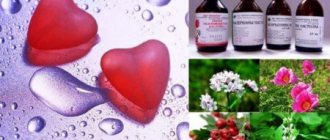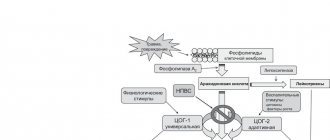Thrombolytic drugs were first used in clinical practice by S. Sherry and V. Tillet back in 1949. Already in 1959, there was evidence of the successful use of Streptokinase for the treatment of patients with myocardial infarction, but thrombolytics received general recognition only in 1989.
Unlike anticoagulants and antiplatelet drugs, the use of which helps prevent the formation of blood clots, thrombolytic agents are capable of dissolving an already formed fibrin thrombus. This effect helps restore normal blood flow in the ischemic zone of the affected organ and normalize its functioning.
This article will help you learn about the indications and contraindications for thrombolytic therapy and introduce you to the main drugs in this group. Remember that thrombolytics should be prescribed only by a doctor, and their use should be accompanied by monitoring of laboratory blood parameters and vascular condition.
Indications
Thrombolytics can be used in various fields of medicine. The main indications for their use are diseases accompanied by the formation of fibrin blood clots. Thrombosis can be arterial, venous, or caused by systemic, paradoxical, or pulmonary thromboembolism.
Main indications for the use of thrombolytics:
- myocardial infarction;
- stroke;
- TELA;
- peripheral and central arterial thrombosis;
- thrombosis of the renal, hepatic and other veins, except the veins of the legs;
- thrombosis of the implanted tricuspid valve;
- thrombosis of the central retinal vein;
- blockage of aorto-coronary and other auxiliary bypass grafts;
- blockage of a peripheral artery.
The use of these drugs for myocardial infarction is indicated in the following cases:
- a typical angiotic attack of myocardial infarction, lasting at least 30 minutes and not amenable to elimination by taking Nitroglycerin, from the onset of which no more than 11-12 hours have passed;
- blockade of the left bundle branch that developed within 12 hours after the onset of myocardial infarction;
- in patients with a Q wave observed on the ECG in the first 6 hours from the onset of myocardial ischemia;
- in patients with myocardial infarction, accompanied by ST segment elevation on the ECG in two or more leads that are conjugate or located nearby;
- in patients with myocardial infarction complicated by cardiogenic shock, in the first 6 hours from the onset of the attack.
All of the above indications for the use of thrombolytics can be considered only after eliminating absolute contraindications to their use.
The effectiveness of thrombolytic agents can be assessed by performing a blood test, ECG or angiography.
Complications of thrombolysis
Hemorrhagic transformations of the ischemic focus
Hemorrhagic transformations are intracerebral hemorrhage in the area of the ischemic focus. There are early, occurring in the first 24-36 hours after thrombolysis, and late hemorrhagic transformations.
Bleeding outside the focus
If potentially dangerous bleeding occurs, alteplase should be discontinued. In most cases, there is no need to replace clotting factors due to the short half-life of alteplase.
Allergic reactions
In 1-5% of patients, during the administration of alteplase, allergic reactions occur with the development of angioedema of the tongue and lips. Corticosteroids and antihistamines are prescribed. In case of hypotension, it is necessary to urgently restore systemic hemodynamics by infusion of crystalloids. If there is no effect, doctors administer vasopressors (norepinephrine, epinephrine, phenylephrine) to the patient. Approximately 10-15% of patients after thrombolysis develop rethrombosis in the early stages.
Antiplatelet therapy
Experts always recommend the use of acetylsalicylic acid (ASA) for ischemic stroke. Acetylsalicylic acid (Aspirin) 100-300 mg per day for the first 48 hours. If enteral administration is not possible, use ASA rectally in suppositories (100-500 mg/day). In the future, long-term use of 75-150 mg/day is recommended. Acetylsalicylic acid is not prescribed if thrombolysis is planned, and for 24 hours after thrombolysis.
In cases of ASA intolerance, as well as after a recurrent stroke during treatment with acetylsalicylic acid (Aspirin), drugs from the thienopyridine group are used (clopidogrel 75 mg per day). Aspirin and clopidogrel should not be co-administered. This leads to hemorrhagic complications.
Contraindications
Thrombolytic therapy is not carried out in case of bleeding or the threat of bleeding.
The main undesirable side effect of these drugs is possible bleeding, which can both aggravate the underlying disease and affect the general condition of the patient. In this regard, contraindications to the administration of thrombolytics can be absolute or relative.
Absolute contraindications
- Presence of internal bleeding at the time of appointment;
- massive bleeding from the organs of the genitourinary or digestive system, if less than 10-14 days have passed since the date of their occurrence;
- injuries that were accompanied by damage to internal organs, biopsies or large-scale operations, if less than 10 days have passed since their date;
- surgical interventions on the spinal cord or brain, if less than 2 months have passed since their date;
- uncorrectable rise in blood pressure over 200/120 mmHg. Art.;
- suspicion of pericarditis;
- risk of aortic aneurysm dissection;
- previous hemorrhagic stroke;
- residual effects after a stroke;
- hemorrhagic diathesis;
- suspicion of acute pancreatitis;
- thrombocytopenia with platelet counts less than 100 thousand per 1 cm3;
- allergic reactions to thrombolytic.
Relative contraindications
- Diseases that can cause bleeding;
- infective endocarditis;
- acute pericarditis;
- severe pathologies of the kidneys or liver;
- pregnancy;
- severe arterial hypertension up to 180/110 mm Hg. Art. and higher;
- pathologies of cerebral vessels;
- diabetic hemorrhagic retinopathy;
- previous surgical interventions or injuries associated with damage to the spinal cord or brain;
- bleeding from the digestive organs and genitourinary system;
- deep vein thrombosis of the legs;
- bone fractures;
- large-scale burns;
- thrombolytic therapy with APSAC or Streptokinase (especially if these drugs were used less than 4-9 months ago), if the same drugs are required (other thrombolytics can be used).
Prevention of venous thrombosis and pulmonary embolism
Contraindications for heparin therapy are: large volume of infarction (more than 50% of the middle cerebral artery), uncontrolled arterial hypertension. Not prescribed during thrombolysis and during hypothermia. The use of low molecular weight heparins, compared with unfractionated heparin, is associated with a lower incidence of hemorrhagic complications. Prescribed for the prevention of deep vein thrombosis and pulmonary embolism after the end of the acute period. Early activation of patients also reduces the risk of pulmonary embolism.
Thrombolytic drugs
Thrombolytics can provide dissolution (lysis) of a blood clot in two ways: by delivering activated plasmin to the body or by activating plasminogen, which enhances the formation of plasmin from plasminogen. Depending on the mechanism of action, they are divided into the following three groups:
- I (direct) – drugs of plasma origin that have a direct proteolytic and specific effect on fibrin;
- II (indirect) - agent drugs that activate the formation of plasmin by acting on plasminogen (for example, Streptokinase);
- III (combined) - drugs that combine the properties of drugs from groups I and II.
Fibrinolysin (Plasmin)
Fibrinolysin consists of profibrinolysin (plasminogen) isolated from human plasma and activated by trypsin. This direct-acting drug is not effective enough because it has a slow effect on arterial blood clots. Despite this, it is still used in Russia and Ukraine when it is impossible to use more effective and modern thrombolytic agents.
Streptokinase (Streptase)
When Streptokinase is administered, a Streptokinase-Plasminogen complex is formed in the patient’s blood, which ensures the formation of plasmin. To create this indirect thrombolytic, scientists isolated a peptide (non-enzymatic protein) contained in group C beta-hemolytic streptococcus, which is a direct plasminogen activator. Analogs of this drug are: Cabikinase, Celiaza, Avelizin, etc.
This thrombolytic may induce the production of antibodies to Streptokinase. This is due to the fact that it is produced from a culture of streptococcus, to which most people develop antibodies. This immune reaction can last for several weeks and stops only 6 months after administration of the drug. That is why re-administration of Streptokinase is not recommended 4-9 months after the use of this thrombolytic or APSAC and after diseases caused by streptococci. To prevent the development of allergic reactions from the administration of this thrombolytic, it is recommended to use antihistamines or corticosteroids before using it.
Urokinase
Urokinase is an enzyme that is produced from kidney cell cultures. This substance activates plasminogen and promotes its conversion to plasmin.
Unlike Streptokinase, Urokinase does not promote the production of antibodies and extremely rarely causes allergic reactions. Analogues of this thrombolytic are: Urokidan, Abbokinase, etc.
Prourokinase
Prourokinase is a plasminogen activator and is produced from DNA-recombined human embryonic kidney cells. Two forms of this thrombolytic are available:
- non-glycolysed recombinant prourokinase (saruplase);
- glycolysed recombinant prourokinase.
Both forms of prourokinase are equally effective, but the glycolysed one has a faster onset of action.
APSAC
APSAK (or acetylated plasminogen-streptokinase complex) is a combination of the Streptokinase-Plasminogen complex with an acetyl group, which provides a faster effect of this thrombolytic on the blood clot. Analogs of APSAC are: Eminase, Antistreplas.
Tissue plasminogen activator
Tissue plasminogen activator was previously produced from cultured human melanoma cells and human uterine tissue. Now this thrombolytic is produced from DNA recombinant materials.
The drug is a serine protease that interacts with plasmin, trypsin and factor Xa and binds to fibrin, ensuring the dissolution of the blood clot. Tissue plasminogen activator does not cause the production of antibodies, allergic reactions and does not affect hemodynamics. According to research data, this drug has a more pronounced thrombolytic effect than Urokinase and Streptokinase.
Staphylokinase
This thrombolytic is secreted by various strains of Staphylococcus aureus, but modern industry produces the drug using the DNA recombinant method. Unlike Streptokinase, Staphylokinase has a more pronounced thrombolytic effect and is less allergenic. There is evidence that this drug is more effective than tissue plasminogen activator, since no deaths were observed in the study group of patients with myocardial infarction taking this thrombolytic.
Thrombolytics are highly effective drugs for the treatment of many pathologies of the cardiovascular system accompanied by thrombosis. Their timely and competent use can preserve the ability to work and life of patients. The advisability of prescribing these drugs should be carefully assessed taking into account all indications and contraindications.
After completion of thrombolytic therapy, relapses of thrombosis are possible, since these drugs are able to dissolve a blood clot, but do not prevent its re-formation. In this regard, after completing these medications or in parallel with them, patients are prescribed anticoagulants and antiplatelet agents.
Classification
Thrombolytic drugs are classified by generation. There are three of them in total. They are fundamentally different.
Despite generally identical indications, the mechanism of influence, effectiveness, degree of safety, the range of potential patients is always different. This must be taken into account when prescribing.
| Generation | Name |
| 1 |
|
| 2 |
|
| 3 |
|
Price Differences
The price of drugs is rising according to generation. Medicines of the latter group are extremely expensive (the same Tenecteplase, trade name Metalise, can be purchased for at least 25,000 rubles, usually the figures are even higher).
Second generation: Actilyse costs from 15,000 rubles, Purolaza from 8,500 rubles. It is considered the gold standard in terms of safety and effectiveness.
However, in medical institutions in Russia and the CIS countries they prefer to use obsolete, dangerous, but at the same time powerful names like Streptocanise (cost from 1050 rubles), Thromboflux (from 3,150 rubles) and Urokinase (from 1500 rubles)
